Don't wanna be here? Send us removal request.
Text
Where can I learn PHP for free?
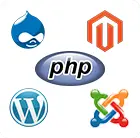
PHP (Hypertext Preprocessor) is a widely-used open-source server-side scripting language, primarily used for web development. Despite the rise of modern frameworks and languages, PHP continues to power a large portion of the internet—including popular platforms like WordPress, Joomla, and Drupal. One of the most appealing aspects of learning PHP is the abundance of free resources available online.
In this article, we’ll explore the best places and methods to learn PHP for free, including websites, platforms, tools, and practical strategies for self-paced learners.
Why Learn PHP in 2025?
Before diving into resources, it's worth understanding why PHP is still relevant:
PHP powers over 70% of websites (e.g., Facebook, Wikipedia, WordPress).
It’s relatively easy to learn and beginner-friendly.
A large community ensures continuous support and updates.
PHP integrates seamlessly with databases like MySQL and tools like Apache.
Top Platforms to Learn PHP for Free
1. W3Schools
W3Schools is one of the most beginner-friendly platforms. It provides:
Structured PHP tutorials
Real-time code editor ("Try it Yourself")
Simple syntax explanations
2. PHP Manual (Official Documentation)
The official PHP documentation is one of the most in-depth resources available. While it's more suited for intermediate users, beginners can benefit from:
Function definitions
User-contributed notes
Examples and syntax breakdowns
3. freeCodeCamp (YouTube & Website)
freeCodeCamp offers full PHP tutorials on their YouTube channel and also writes detailed blogs and courses on their website. Their video tutorials are beginner-focused and cover practical projects.
SoloLearn
SoloLearn offers a mobile-friendly PHP course that's ideal for learning on the go. Features include:
Bite-sized lessons
Community discussions
Practice challenges
App available on iOS and Android or visit sololearn.com
5. GeeksforGeeks PHP Tutorials
GeeksforGeeks provides well-organized tutorials, coding problems, and explanations. It’s particularly useful if you prefer learning through examples and theoretical content side-by-side.
Website: geeksforgeeks.org/php
Tools to Support Your Learning
Learning PHP isn’t just about reading—it’s about building. Here are tools to help you practice:
XAMPP / MAMP – Local development environments to test PHP code on your machine.
Replit or PHP Fiddle – Online editors that let you run PHP code without setup.
GitHub – Browse open-source PHP projects and contribute or clone them to learn.
Tips to Learn PHP Effectively (for Free)
Start With Basics:
Variables, data types, functions, and loops
Form handling and basic validation
Working with arrays and strings
Build Small Projects:
Contact form
Basic CMS (Content Management System)
To-Do list with PHP and MySQL
Join Forums and Communities:
Stack Overflow, Reddit (r/php), and PHP Developer Slack channels
Ask questions, share code, and collaborate
Practice Consistently:
Set a weekly learning schedule and stick to it. Free resources are only useful if you actively engage with them.
What's Next After Learning PHP Basics?
Once you're comfortable with PHP basics, explore:
PHP frameworks like Laravel, CodeIgniter, or Symfony
Object-Oriented Programming (OOP) in PHP
Database integration using MySQL or PostgreSQL
APIs and JSON handling
Security concepts like input validation and SQL injection prevention
These advanced concepts will prepare you for freelance work or full-stack web development roles.
Final Thoughts
You don’t need a hefty budget or expensive bootcamp to start your journey with PHP. With countless free resources, interactive tools, and community support, learning PHP is accessible to anyone with a computer and an internet connection.
The key is consistency, curiosity, and building small but real-world projects to strengthen your understanding.
Whether you're aspiring to build your own website, understand backend web development, or pursue a programming career, PHP is a valuable skill—and learning it for free has never been easier.
0 notes
Text
How many years is the PHP course?
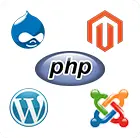
If you're planning to pursue a career in web development, learning PHP (Hypertext Preprocessor) is a smart choice. It's a widely used server-side scripting language that powers popular websites and platforms like WordPress, Facebook (in its early days), and many content management systems. One of the most common questions beginners ask is: "How long does it take to complete a PHP course?"
Let’s break it down clearly and concisely.
Duration of a PHP Course: An Overview
The duration of a PHP course can vary significantly based on your learning goals, background, and the type of course you choose. Generally, PHP courses are structured in one of the following formats:
1. Short-Term Certification Courses (2 to 6 Months)
These are ideal for beginners or working professionals who want to quickly gain practical PHP skills. Topics usually include:
PHP syntax and variables
Form handling
Connecting to MySQL databases
Basic CRUD (Create, Read, Update, Delete) operations
These courses focus on hands-on training and are designed to help learners build dynamic websites within a short period.
2. Diploma Programs (6 Months to 1 Year)
Diploma courses in PHP and web development go a step further. Along with PHP, they often cover:
HTML, CSS, JavaScript
Bootstrap framework
Advanced PHP techniques
Real-world project development
These programs are suitable for students looking to build a strong foundation in full-stack development with PHP as the backend language.
3. Degree Programs (3 to 4 Years)
Some undergraduate programs, such as Bachelor’s in Computer Science or Information Technology, include PHP as part of their curriculum. PHP is taught along with other programming languages, databases, and software development practices.
However, it’s important to note that PHP is just one component of a degree program and not the primary focus.
Factors That Affect Course Duration
The length of your PHP learning journey depends on several factors:
Your current programming knowledge: If you already know HTML, CSS, or JavaScript, you’ll learn PHP faster.
Learning format: Self-paced online courses may take longer or shorter depending on your schedule. Classroom training follows a fixed duration.
Depth of study: A course focused on basic PHP differs in duration from one covering frameworks like Laravel or CodeIgniter.
Project-based learning: Courses that involve real-world projects or portfolio building may take extra time but offer better practical skills.
Choosing the Right PHP Course
When selecting a PHP course, consider:
Duration that fits your schedule
Whether it includes project-based learning
If it offers a certificate or diploma upon completion
Reviews and ratings of the training provider or platform
Many learners start with a short-term course and later upgrade to advanced PHP frameworks as they gain experience.
Final Thoughts
So, how many years is the PHP course? The answer depends on your goals. For most learners:
A basic PHP certification takes 2 to 6 months.
A diploma course takes 6 to 12 months.
A degree program spans 3 to 4 years, with PHP as a subject among many others.
If your objective is to become a job-ready PHP developer, a 6-month to 1-year focused course is usually sufficient when combined with consistent practice and project work. Choose a course that fits your career goals, and make sure it includes hands-on training and real-world application.
0 notes
Text
What is the fee structure of PHP?
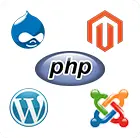
As the demand for web developers continues to rise, learning PHP—a widely-used, open-source server-side scripting language—has become an attractive choice for aspiring developers. One of the most common questions from prospective students is: “What is the fee structure of a PHP course?”
In this article, we’ll explore the different types of PHP courses available and the cost associated with each, helping you choose the right learning path that fits your budget and career goals.
Types of PHP Courses and Their Fee Ranges
The fee structure of PHP courses can vary significantly based on factors such as course duration, training institute, location, and the depth of content covered. Below is a breakdown of typical course types and their expected fees.
1. Short-Term PHP Certification Courses
Duration: 1 to 3 months
Fee Range: ₹5,000 to ₹20,000
What’s Included:
Basic PHP programming
Working with forms and databases
Introduction to MySQL
Simple project work
These are beginner-friendly programs ideal for individuals with little to no coding background.
2. Advanced PHP or Full Stack Web Development Courses
Duration: 4 to 6 months
Fee Range: ₹20,000 to ₹50,000
What’s Included:
Core and advanced PHP
HTML, CSS, JavaScript, Bootstrap
PHP frameworks like Laravel or CodeIgniter
API integration
Portfolio-building projects
These courses are suitable for learners who want to develop complete websites or applications and may include job placement support.
3. Diploma in PHP Development
Duration: 6 months to 1 year
Fee Range: ₹30,000 to ₹70,000
What’s Included:
All the content from basic and advanced courses
Deep dives into software development methodologies
Real-world project experience
Certification upon completion
This level of training is geared toward individuals aiming for long-term careers in backend or full-stack development.
4. Online PHP Courses (Self-Paced)
Duration: Flexible
Fee Range: ₹500 to ₹5,000 (sometimes even free)
Platforms: Udemy, Coursera, edX, and others
What’s Included:
Pre-recorded video lessons
Downloadable resources
Quizzes and assignments
These are cost-effective options for self-learners, though they may lack personalized guidance or career support.
What Factors Affect the Fee Structure?
Several variables impact the cost of a PHP course:
Location: Institutes in metro cities typically charge more than those in smaller towns.
Training Mode: Classroom training may be more expensive than online learning.
Trainer Experience: Courses taught by industry experts or certified professionals may come at a premium.
Inclusions: Fees may increase if the course includes internship opportunities, job placement assistance, or access to premium tools and software.
Tips Before Enrolling
Compare multiple institutes before making a decision.
Ask for a detailed syllabus to ensure you're getting comprehensive content.
Check for hidden costs, such as exam fees or software licenses.
Read reviews or ask for demo classes to assess quality.
Final Thoughts
The fee structure of a PHP course can range from a few hundred rupees for online modules to ₹70,000 or more for comprehensive, career-focused training programs. Ultimately, the right choice depends on your budget, goals, and preferred learning style.
Investing in a quality PHP course not only equips you with the skills needed to build dynamic websites and web applications but also opens the door to a wide range of career opportunities in web development.
0 notes
Text
What are advantages of PHP?
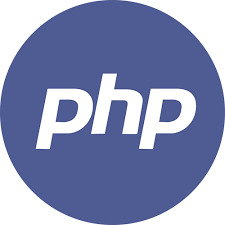
PHP (Hypertext Preprocessor) is a popular open-source scripting language designed specifically for web development. It’s known for its simplicity, flexibility, and compatibility with various platforms. Whether you're a beginner starting your coding journey or a professional developer looking to expand your skill set, PHP continues to be a valuable language to learn.
Let’s explore the key advantages of PHP that have kept it relevant and widely adopted for over two decades.
1. Easy to Learn and Use
One of the biggest advantages of PHP is its simplicity. The syntax is straightforward, making it easy for beginners to grasp basic programming concepts. It doesn’t require advanced knowledge to start building dynamic web pages, making it an ideal choice for those new to web development.
2. Open Source and Free
PHP is an open-source language, which means it’s completely free to use. There are no licensing fees, and developers have access to a large repository of tools, libraries, and frameworks—without additional costs. This makes PHP a budget-friendly option for startups, freelancers, and students.
3. Cross-Platform Compatibility
PHP works seamlessly across all major operating systems, including Windows, macOS, Linux, and Unix. It also supports a wide variety of servers and databases, particularly MySQL. This cross-platform capability allows developers to create and deploy web applications on different environments with ease.
4. Strong Community Support
PHP has a large, active community of developers worldwide. This means there’s extensive documentation, forums, and tutorials readily available. Whether you're troubleshooting an issue or looking for new development techniques, community support is always within reach.
In fact, students who enroll in the Best PHP course in Chandigarh often benefit from both structured training and exposure to this global PHP community, giving them practical skills and real-world insights.
5. Fast Performance
When used efficiently, PHP delivers quick response times and low server load, especially when paired with optimized code and modern databases. It is capable of handling high-traffic websites and supports caching techniques to further boost speed.
6. Scalability and Flexibility
PHP can handle everything from small websites to large-scale applications. It supports object-oriented programming, MVC architecture, and integration with various APIs and third-party tools. As your project grows, PHP scales with it—making it suitable for both simple websites and complex platforms.
7. Wide Range of Frameworks
PHP boasts powerful frameworks like Laravel, Symfony, CodeIgniter, and Zend, which speed up development and enforce best practices. These frameworks simplify tasks like routing, authentication, and database management, enabling developers to build robust applications more efficiently.
8. Secure Development Environment
With built-in features and frameworks that promote secure coding practices, PHP helps developers guard against common threats like SQL injection, XSS, and CSRF attacks. Combined with proper server configurations and best practices, PHP provides a secure foundation for web development.
Final Thoughts
The advantages of PHP—ease of learning, cost-efficiency, cross-platform support, and a strong ecosystem—make it one of the most dependable technologies for web development. Whether you are building a personal blog or a full-scale enterprise application, PHP gives you the tools and flexibility to succeed.
If you're serious about mastering web development, enrolling in the Best PHP course in Chandigarh can provide the expert guidance, real-world projects, and up-to-date knowledge needed to start or advance your career in coding.
0 notes
Text
What is PHP and types of PHP?
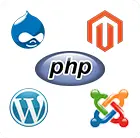
In the ever-evolving world of web development, PHP stands out as one of the most reliable and widely used scripting languages. Known for its flexibility and ease of use, PHP has powered countless websites and web applications across the globe. In this article, we’ll explore what PHP is and discuss the types of PHP that are relevant in today’s development landscape.
What Is PHP?
PHP, which stands for Hypertext Preprocessor, is an open-source, server-side scripting language designed for web development. It was originally created by Rasmus Lerdorf in 1994 and has since evolved into a powerful tool used to build dynamic and interactive web pages.
PHP scripts are executed on the server, and the result is sent to the client’s browser as plain HTML. It is embedded within HTML, making it easy to integrate with web pages. PHP is especially known for its compatibility with databases like MySQL, making it ideal for content management systems, e-commerce platforms, and social networking sites.
Key Features of PHP
Open-source and free to use
Cross-platform compatibility (Windows, Linux, macOS)
Supports a wide range of databases
Easy integration with HTML, CSS, and JavaScript
Extensive community support and documentation
Because of its widespread use, many aspiring developers join professional training programs such as the Best PHP classes in Chandigarh to gain hands-on experience and industry-relevant skills.
Types of PHP
While PHP itself is a language, it can be categorized or approached in different ways depending on the use case and development methodology. Here are the common types or classifications of PHP usage:
1. Core PHP
Core PHP refers to writing PHP scripts without any external frameworks. Developers use raw PHP code to create web pages, connect databases, and handle user inputs.
Best for learning fundamentals
Lightweight and fast
Offers complete control to the developer
However, as applications grow in complexity, Core PHP can become difficult to manage without structure.
2. Object-Oriented PHP
Object-Oriented Programming (OOP) in PHP involves organizing code into reusable classes and objects. This approach promotes code reusability, scalability, and better application design.
Enhances application maintainability
Supports encapsulation, inheritance, and polymorphism
Ideal for larger projects and team collaboration
Most modern PHP applications use object-oriented practices, and many frameworks are built on this principle.
3. PHP Framework-Based Development
Using frameworks in PHP accelerates development by offering pre-built modules and tools. Some of the popular PHP frameworks include:
Laravel – Modern and elegant with built-in authentication, routing, and templating
CodeIgniter – Lightweight and ideal for beginners
Symfony – Enterprise-level framework with reusable components
Yii – High-performance, especially for large-scale applications
Framework-based PHP is widely adopted in professional environments due to its structure, security, and scalability.
4. CMS-Based PHP Development
Many popular Content Management Systems (CMS) are built with PHP, such as:
WordPress
Drupal
Joomla
These systems allow users to build websites without needing to write much code. PHP developers often customize themes and plugins within these platforms to meet specific requirements.
Final Thoughts
PHP remains a vital technology in web development, powering millions of websites worldwide. Whether you're coding from scratch using Core PHP or working with advanced frameworks and CMS platforms, understanding the different types of PHP development gives you the flexibility to build anything from simple websites to complex applications.
For beginners and professionals alike, joining the Best PHP classes in Chandigarh can provide practical training, industry insights, and project-based learning that truly accelerates your journey in web development.
0 notes
Text
What is the introduction of PHP?
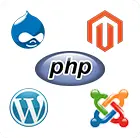
In the modern digital landscape, creating interactive and data-driven websites is essential for businesses and individuals alike. Among the tools available for web development, PHP (Hypertext Preprocessor) stands out as one of the most widely used and beginner-friendly scripting languages. With its flexibility, open-source nature, and robust performance, PHP has earned its place in the core toolkit of developers worldwide.
What Is PHP?
PHP is a server-side scripting language primarily designed for web development but also used as a general-purpose programming language. Originally developed by Rasmus Lerdorf in 1994, PHP has evolved over the years and is now maintained by The PHP Group.
Unlike client-side languages such as JavaScript, PHP executes on the server, generating HTML that is then sent to the client’s browser. This means users interact with dynamic, database-driven content without seeing the underlying code—making PHP ideal for building interactive websites, applications, and content management systems.
Why Is PHP So Popular?
PHP’s popularity stems from its ease of use and wide compatibility. It integrates seamlessly with HTML and databases like MySQL, making it an efficient choice for creating login systems, forms, shopping carts, blogs, forums, and much more. Platforms like WordPress, Joomla, and Drupal—all powered by PHP—highlight its dominance in the CMS space.
Students looking to build a solid foundation in web development often choose the Best PHP course in Chandigarh to gain practical skills through hands-on projects and expert guidance, preparing them for real-world applications.
Key Features of PHP
Here are some core characteristics that define PHP and its continued relevance in web development:
Open Source: Completely free to use and modify.
Cross-Platform: Compatible with Windows, Linux, macOS, and almost all web servers.
Flexible and Fast: Quickly adapts to different project needs and delivers high performance.
Database Integration: Works smoothly with MySQL, PostgreSQL, and other relational databases.
Extensive Community Support: A massive global developer community contributes libraries, tools, and documentation.
What Can You Build with PHP?
PHP is capable of powering a wide range of applications, including:
E-commerce websites
Content management systems (CMS)
Social networking platforms
Web-based email applications
Booking and reservation systems
Custom APIs and microservices
From small business websites to enterprise-level platforms, PHP offers the flexibility and power needed for diverse development projects.
Final Thoughts
PHP remains one of the foundational technologies in web development, thanks to its user-friendly nature, strong community, and robust capabilities. For anyone looking to enter the world of coding or enhance their web development skills, understanding PHP is an excellent starting point.
Enrolling in the Best PHP course in Chandigarh is a smart step toward mastering this powerful language. With industry-relevant training, real-world projects, and professional mentorship, students can confidently build dynamic websites and launch successful development careers.
0 notes